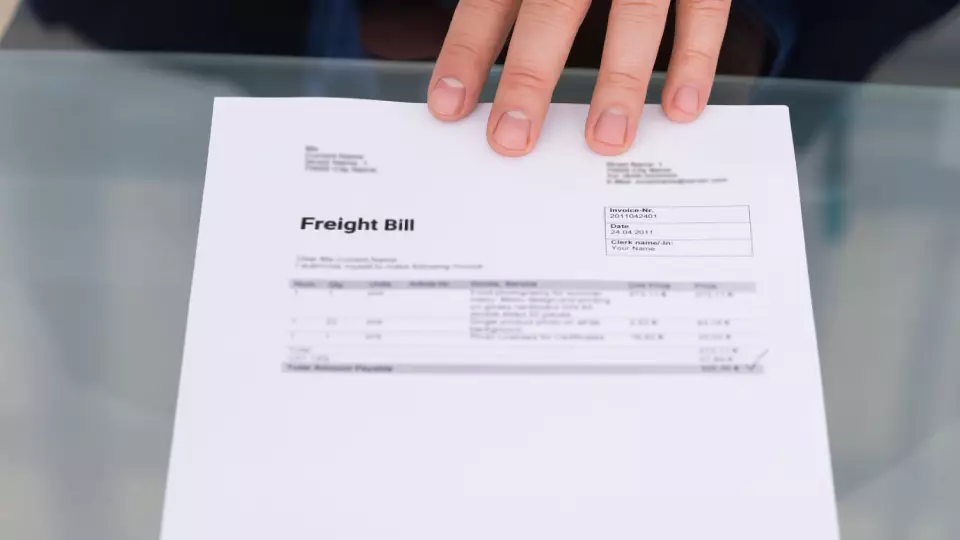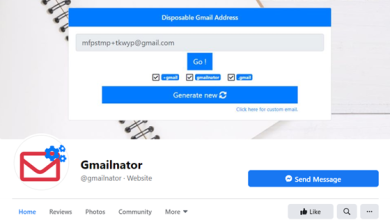
What does a freight bill number mean? The freight shipment’s identification number, typically assigned by the carrier, is known as the freight bill number. This number is normally on the shipping paper or the bill from the shipper.
To track the movement of goods, use the Freight Bill Number. It helps identify how goods were shipped, including by road, ship, air, and train. It also helps identify the people or businesses working on it.
In this article, let us see the meaning of freight bill number?
What is Freight Bill Number?
An assigned tracking number for a freight shipment is called a freight bill number. Shippers, agents, carriers, forwarders, and customers can all track shipments using the freight bill number. There are several ways to use a freight bill number. To begin, a shipment’s number helps to identify it. Second, the freight bill number can identify the person or organization that made the number. It can also be beneficial to identify the company responsible for a shipment.
The freight bill number can be used to track a shipment’s movement. A freight bill number, for instance, can be used to identify which shipment is shipped via one mode of transportation and which shipment is shipped via another mode of transportation.
An assigned five-digit number for a freight shipment is called a freight bill number. A number 001 would be assigned, for instance, if a freight shipment was shipped to a location in California. The shipping bill number helps identify the carrier and type of transportation used to ship a shipment.
What is a freight bill used for?
A “freight bill” document is used by railroads to pay for the shipments of goods they transport by train. The company that will receive the goods gets the bill in the mail. After the goods arrive, the company pays the train for the shipment and the time it takes. The company needs to make this payment to ensure timely receiving the items they bought.
The freight bill is a piece of paper you use to mail things. The purpose of it is to protect the individual from receiving too much damage from the shipment. The freight bill also helps keep track of the items being sent to each individual.
Types of freight bill
A shipment’s progress, the amount of freight the shipping company has paid, and the amount of freight the shipper has paid can all be tracked with the help of freight bills. These bills are usually sent to the shipper after the shipment has been moved. The shipper can use these bills to determine when the shipment will be delivered, how much it weighs, and where it is going.
Here are Types of freight bill:
Bill of lading
The shipper’s and carrier’s rights and responsibilities are outlined in a document called a bill of lading. The carrier is in charge of getting the goods from one spot to another. The carrier must pay any extra expenses incurred due to the shipment. If the carrier doesn’t do this, the shipper is responsible for these costs. What the “bill of lading” says is a deal between the two people. Both the shipper and the carrier should know this document. Before the shipment is delivered to the carrier, the shipper must sign this document.
Invoice
When the shipper wants to ensure how much they will pay for shipping, they use a “freight invoice.” The shipper will pay for shipping based on the weight of the shipment. If needed, the shipper will also be responsible for paying any extra costs.
Bill of Shipment
Some shipments need more than one “bill of shipment” because they are going to different places and companies. Also referred to as a “consignment note” is the “bill of shipment.” This note will detail every place the shipment is going. The “bill of shipment” will also detail the weight of the shipment. The shipper will pay for each carrier that the shipment is delivered to.
Bill of Departure
A document called a “bill of departure” shows when the shipment leaves. To document the shipment’s arrival, use a “bill of shipment.” Before shipping can start, both of these documents must be filled out. The “bill of shipment” will be filled out and given to the shipper once the shipment has been delivered. The shipper will also get a “bill of lading” to help them track the shipment and see if there are any other fees they need to pay.
Clean Bill of Lading
What are clean bills of lading? They don’t have any mistakes on them, like a freight charge that isn’t shown on the bill. Clean bills of lading are documents that shippers can use to make sure they are not paying for any charges that are not necessary.
Consignment Bill of Lading
For shipments going to numerous places, consignment bills of lading are used. The shipper pays for each shipment they deliver. The shipper will pay for individual companies like FedEx, UPS, and so on.
Received for Shipment Bill of Lading
A shipper gets a “Received for Shipment Bill of Lading” when waiting for a shipment. A shipment has yet to leave the carrier, but the shipper is paying for it. Before making any orders, the shipper must receive the “Received for Shipment Bill of Lading.” The shipper should also check to ensure they haven’t made any errors with the shipment.
The shipper and the carrier have each signed this document. And the shipper is paying for this shipment, too. The carrier will deliver the shipment to the shipper. The shipper will be responsible for paying the shipment cost if they fail.
Bill of Import
A “bill of import” is used when goods are brought into the country. When the shipment is delivered, the shipper must also pay a “duty.” Customs will need to be paid for by the shipper if they pay fees.
Through Bill of Lading
A bill of lading is an important document in the shipping and transportation business. A shipping document is a document used to transfer ownership of goods from one person to another. A binding contract between the sender and user, this document is usually signed by both. The bill of lading is a contract signed to protect both the sender’s and receiver’s rights.
Claused Bill of Lading
A document used for shipping goods is a Claused Bill of Lading. This document says the shipped goods were loaded onto the ship and not by the shipper. This is important because it keeps the shipper from being responsible for any damage to the goods while they are being sent.
Container Bill of Lading
The bill of lading is a key component of the container revolution that has transformed the shipping business. The terms of a contract between a foreign shipping company and the buyer of goods are outlined in a bill of lading, which is a document. It serves as evidence of the ship’s owner, the terms of the contract, and the responsibilities of both parties, as suggested by its name. For the foreign movement of goods, it is issued by the shipping company.
The United States Bill of Lading (B/L)’s back document, the Container Bill of Lading, proves that the goods are controlled by the owner’s ship. It shows that the carrier has received the goods and the bill of lading. The bill of lading, typically a formal document, is a receipt for cargo deliveries.
House Bill of Lading
A warehouse receipt, also called a house bill of lading, is a document used to record the transfer of goods within a warehouse. It is frequently used in the United States to record a shipment of goods. As a warehouse receipt is legally binding, this is usually agreed upon by both the buyer and the seller. The date of the shipment, the warehouse, the receiver, the seller, the issuing warehouse, and the time the shipment of the goods was made are all indicated on the warehouse receipt.
Master Bill of Lading
To move goods from one place to another, a Master Bill of Lading is a complicated document. It has all the information needed for moving the goods and is the most thorough type of bill of lading. Typically, it is issued by a carrier and signed by the ship’s master.
Stale Bill of Lading
In its original form, an old bill of lading is a document that is no longer useful, usually because it is outdated. In its original state, the document is no longer usable but can still be used to find something else. A ghost bill of lading is another name for an expired bill of lading.
17 Biggest mistakes to avoid when using a freight bill
You must ensure you have the proper papers to avoid paying late fees and being charged more than you should when shipping goods. Some things on a bill need to be bigger to write, like the type and amount of goods.
Biggest mistakes to avoid when using a freight bill:
1. Not checking the freight bill for accuracy
Check the document for accuracy is the first thing you need to do when using a freight bill. Being charged too much is the last thing you want.
2. Not checking the age of the bill of lading
Checking the freight bill’s age is the second thing you must do. The date of the freight bill of lading is important information to know when making a freight bill.
3. Not looking at the freight bill’s validity
The third thing you should do with a freight bill is check to see if it is still current. This is important when you do your freight bill because you want to avoid paying late fees.
4. Not checking if the bill of lading covers the goods
When reviewing a freight bill, the fourth thing you should do is ensure it covers the goods you are shipping. With every bill of lading you receive, you must check this.
5. Not knowing the cargo’s origin
Understanding the explanation is the fifth thing you should do when reviewing a freight bill. Checking the description is important because it might change the information on the freight bill.
6. Not checking what cargo is covered
Checking what cargo is covered is the sixth thing you should do when reviewing a freight bill. Sometimes things are not listed on a bill of lading, so this is important.
7. Not checking what cargo is excluded
Checking what cargo is excluded is the seventh thing you should do when reviewing a freight bill. It is important to know this because there are things that a freight bill only sometimes includes.
8. Not reading the bill of lading carefully
One thing that causes a lot of people to make mistakes is not reading the bill of lading carefully and paying attention to the small print.
9. Not marking the bill of lading
Many people need to mark the bill of lading, which is a simple thing to do. Marking the bill of lading is important to avoid losing the document by mistake.
10. Not marking the bill of lading correctly
Many people need to mark the bill of lading. Make sure the bill of lading is properly marked.
11. Not adding or changing
A lot of people make the mistake of not adding or changing information. It’s important to make sure you add or change needed information.
12. Not checking the expiration date
A lot of people need to check the expiration date. It’s important to check the expiration date.
13. Not checking who owns the cargo
Many people need to check who owns the cargo. It’s important to make sure you know who owns the cargo.
14. Not looking at the shipping date
A lot of people need to check the shipping date. Make sure you check the shipping date.
15. Not having the proper insurance and documentation
Many people need to have the right protection and documentation. It’s important to make sure you have the right protection and documentation.
16. Not always updating a billing document
Only sometimes updating a billing document is something that many people frequently make. It is important to make sure that your payment document is always up to date.
17. Not having a correct phone number and/or address
Many people need the right phone number and address. Ensuring you have the right address and phone number is important.
Conclusion:
This long piece’s a lot of information, but we hope it helped you understand the freight bill. Right now, we hope you understand the freight bill well.



